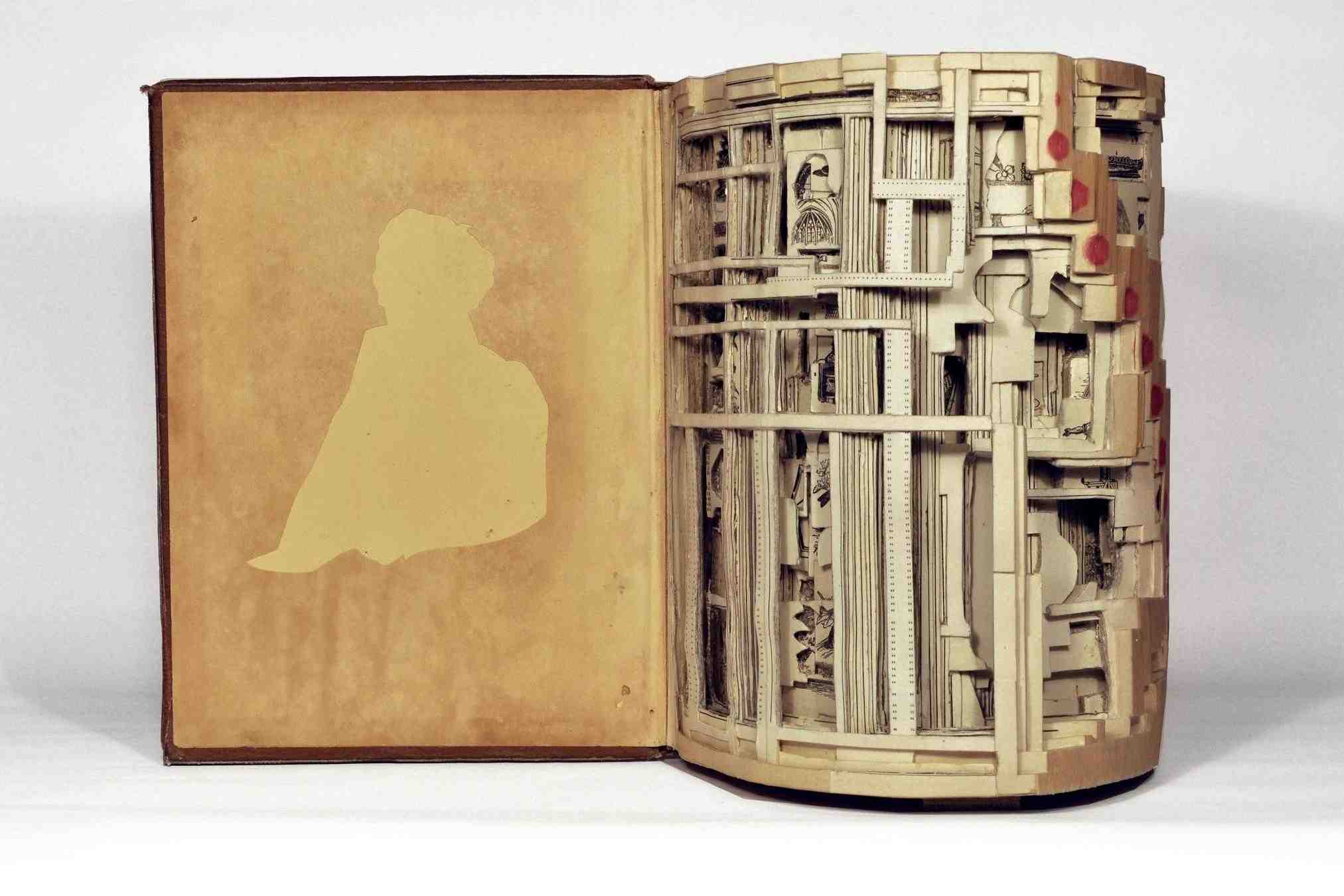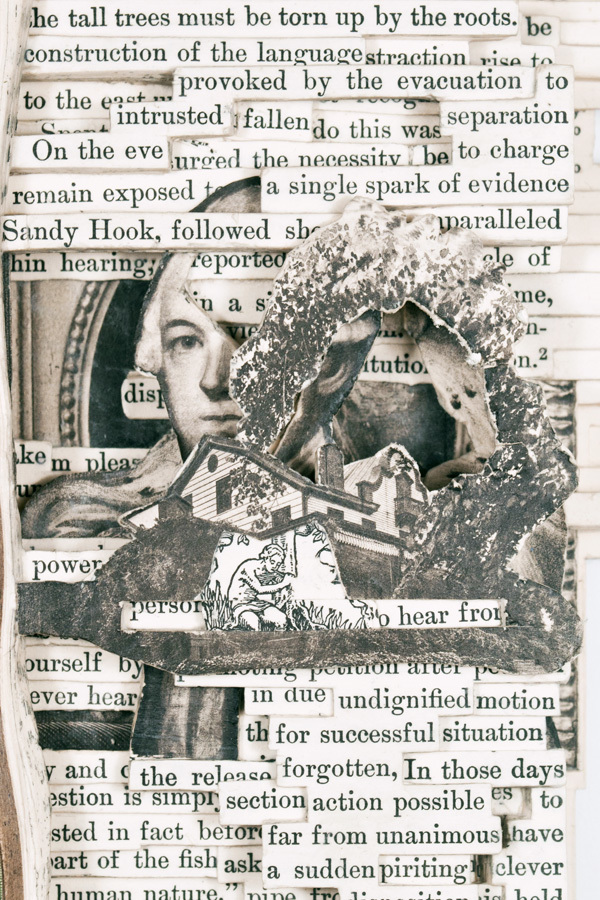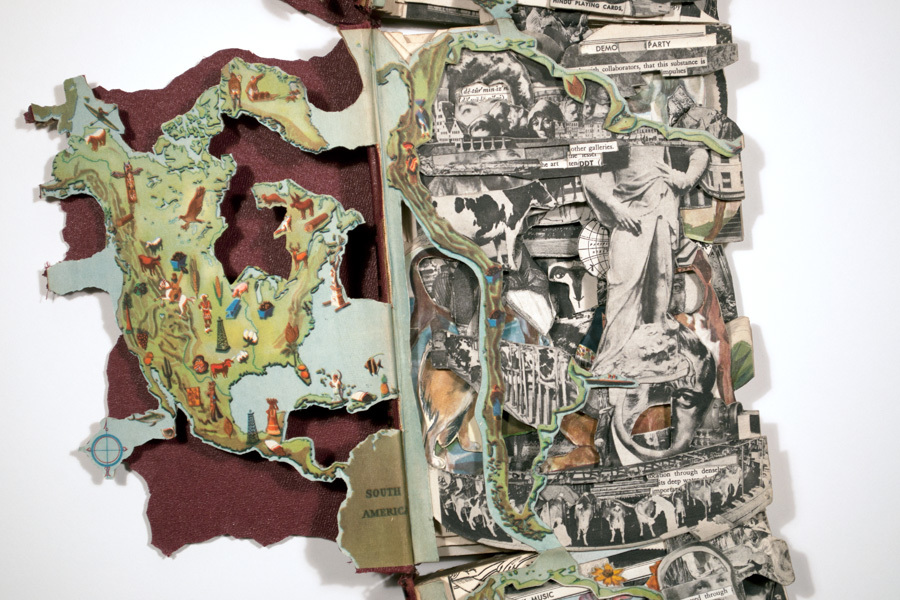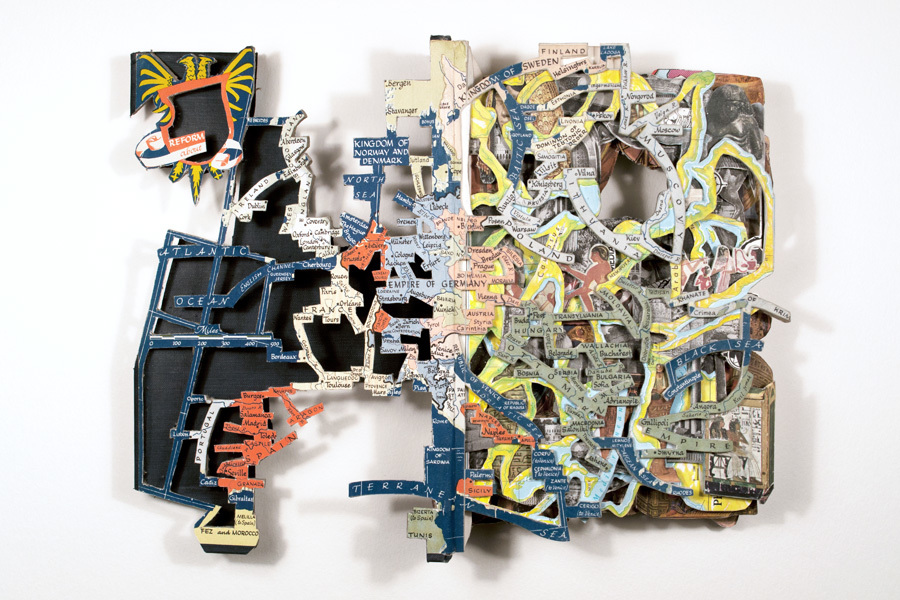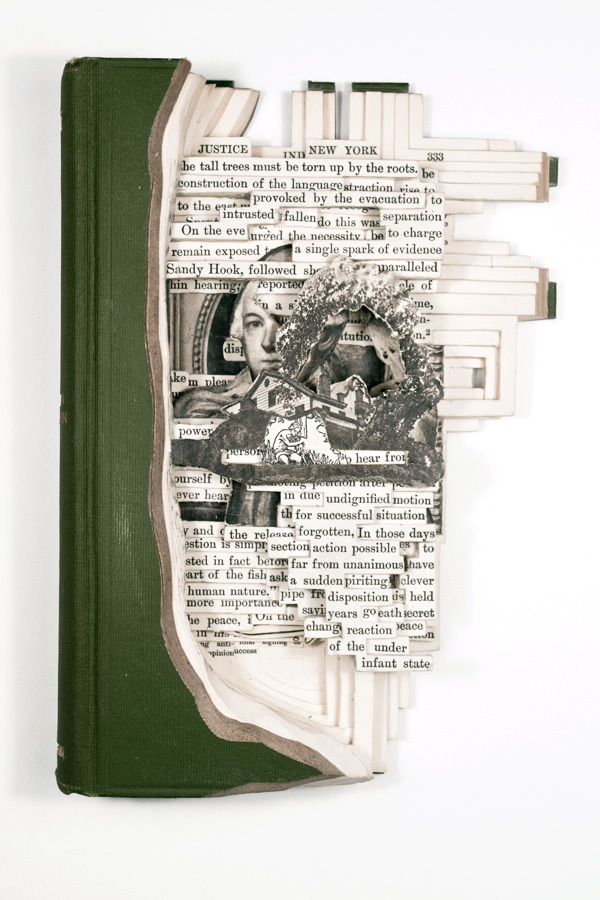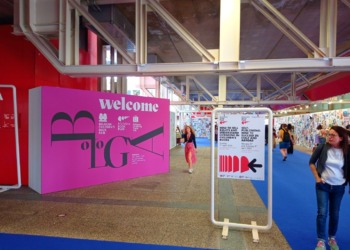We are living in a time when paper books are hiding in the shadows, giving space to digital books. From the point of convenience, digital books are great. They don’t require space on your bookshelves and you can ¨read-listen” to them while driving a car, jogging or walking down the street. However, let’s think about old paper books. What is the destiny of a fantastic novel of, let’s say, Honoré de Balzac or magnificent volumes of Leo Tolstoy? Will they be thrown away or remain forgotten? Brian Dettmer, an American artist and sculptor, found a spectacular solution. He gives a new life to old books, record albums, and cassette tapes, transforming them into a breathtaking piece of art.
Impakter: Brian, can you tell us about yourself? More specifically, how did you become an artist?
Brian Dettmer: It sounds a little cliché but I have been an artist ever since I can remember. As a child, I was always drawing, painting and thinking about new ways of seeing things. I knew I wanted to be an artist (or had to be)but really didn’t know what that meant until I got out of college. I worked as a designer for 10 years after college before I was able to quit my day job and focus completely on my own work.
PHOTO CREDIT: Courtesy of the artist and P•P•O•W, New York
You work with old books, maps, record albums and cassette tapes. Why have you decided to work with these types of media?
B.D: We are in the middle of an important cultural transition- from an era when all of our recorded information, art and entertainment came as a tangible object to our time when most of the content we record and read is purely digital and immaterial. It is the physical quality, the tangibility, the comfort, and concreteness that we are losing because of information shifts to the digital. I am interested in how this affects the way we perceive what we see, hear and read; in what is gained and what is lost by this major transition.
For a full mindmap containing additional related articles and photos, visit #newlifeforbooks
You create breathtaking sculptural pieces from old books. How did you develop your skills with such a high level of craftsmanship?
B.D: I began working with books around 2001 and it has been the primary focus of my work since then. The first works were very simple and rough compared to the work I do now. I try to push the limits with each piece, with my ideas and with the form or format and the amount of detail in the work. I do want the viewer to be drawn in by the detail and the virtuosity but this is just an entry point into my work. I want to create something intriguing and memorable to make a lasting impression that will inspire thought within the viewer about the role of the physical book.
PHOTO CREDIT: Courtesy of the artist and P•P•O•W, New York
That’s an amazing approach to work! Can you tell us, where do you find ideas for your works?
B.D: Much of my inspiration comes from looking at how other fields of study interpret found materials. Archeology, media theory, architecture, design, poetry and music all play roles in the way I try to translate and interpret objects. The actual books I use as materials also inspire new ideas and new ways to approach the work. The subject of the book becomes a metaphor for my process, for new ways to think about the medium. But the work also becomes cumulative. Each new work or new series is inspired by the previous work that I have done. My ideas for future projects will emerge through the time and repetition put into a current work. I have established a rigorous process and I find freedom and inspiration within these restrictions. I don’t start with a blank canvas. I am remixing and riffing from a previous work. So, the material is already loaded with ideas and my role is to decide how to edit, shift or expose those subjects in a new context.
PHOTO CREDIT: Courtesy of the artist and P•P•O•W, New York
I had read recently an article about the daily work routines of the most creative minds. Beethoven used to compose from the morning till the afternoon, while Franz Kafka was able to write his masterpieces only at night. What about you? Can you tell us about your work routine?
B.D: I’m always in the studio from Monday till Friday from 9 A.M. to 5 P.M. and often from 5 A.M. – 8 A.M or 9 P.M. to midnight. I do try to work as much as possible, or at least be in the studio with the work to spend time looking and thinking about what I am doing. I always have several works in various phases but am usually focused on one piece at a time. I will seal the books’ edges with a varnish before I begin to carve so once I begin I have no way to know what I am going to come across other than vague memories of specific images and pages. Once the book is sealed, I begin to carve into the surface with an x-acto knife. I carve around images or text of interest and I remove one page or layer at a time with tweezers. I have no idea what will emerge as I pull back the layers so there is a high level of chance, but it is exciting for me. The process becomes like reading itself. Nothing you see in the finished pieces is moved or added. It is a completely subtractive, sculptural process. I can’t control what will come up, only the way I interpret and respond to it
Related Article: “TRANSFORMING ART WITH ALEXA MEADE”
What drives you to create more and more?
B.D: I have always had the drive, almost the necessity, to work on my art. It is like a therapy, an obsession or an addiction. Every time I finish a work it offers an exciting spark into a new direction the next piece could go. I continue to follow these ideas, follow the flow. But this romantic idea of the artist inspired in the studio isn’t always the truth or reality. You need to stay in the studio and fight through the stretches of uninspired work. You need to treat it like a real job if you want it to be one. If you stay with it for long enough you will break through to the next idea. Each work feels like an approach or an attempt to reach something or some place that is probably not actually obtainable. This is what keeps me working.
I need to try to achieve perfection even though I know perfection doesn’t exist.
Can you tell us the biggest challenges you have you met, being an artist, and how you overcame them?
B.D: The biggest challenge as an artist is what I was mentioning before- to fight through stretches that might not feel inspired and to keep working until the flow arrives- to push the work until a new idea emerges. I think the ideas and inspiration come in waves. They are shaped as steps and there is always a great feeling when I feel I have reached another step with a new work. But it can be very difficult to feel a stretch of time within the work without that progress. No one makes an artist stay in the studio, so you need to find the drive and discipline within yourself to work through these plateaus.
PHOTO CREDIT :Courtesy of the artist and P•P•O•W, New York
There are so many interpretations of the keys to success. What do you personally think is the main key to success?
B.D: As an artist (and I think in many other fields) you need to keep pushing yourself and to stay focused.
You can’t listen to people that might think what you are doing is unnecessary or crazy.
You should use that as a nudge to question yourself and to consider ways of understanding and communicating what is interesting or important in your work. To find success as an artist, you need to find a territory to explore that others respond to as well as you do. There is no direct path or even a balance between the work you do and the success you will achieve in the arts, but the more you question things and the more you push things into new directions, the more likely you are to find success in the work you do.
Can you tell us when and where will be your next exhibition?
B.D: My new solo exhibition just opened at P•P•O•W in New York. It will be open until October 15th (2016). The show includes 45 pieces I have done over the past year and a half. I am very excited with how the show came out and it has had a great response so far.
Recommended Reading: “A QUEST FOR INSPIRATION WITH NICOLE EDDY“
_ _


